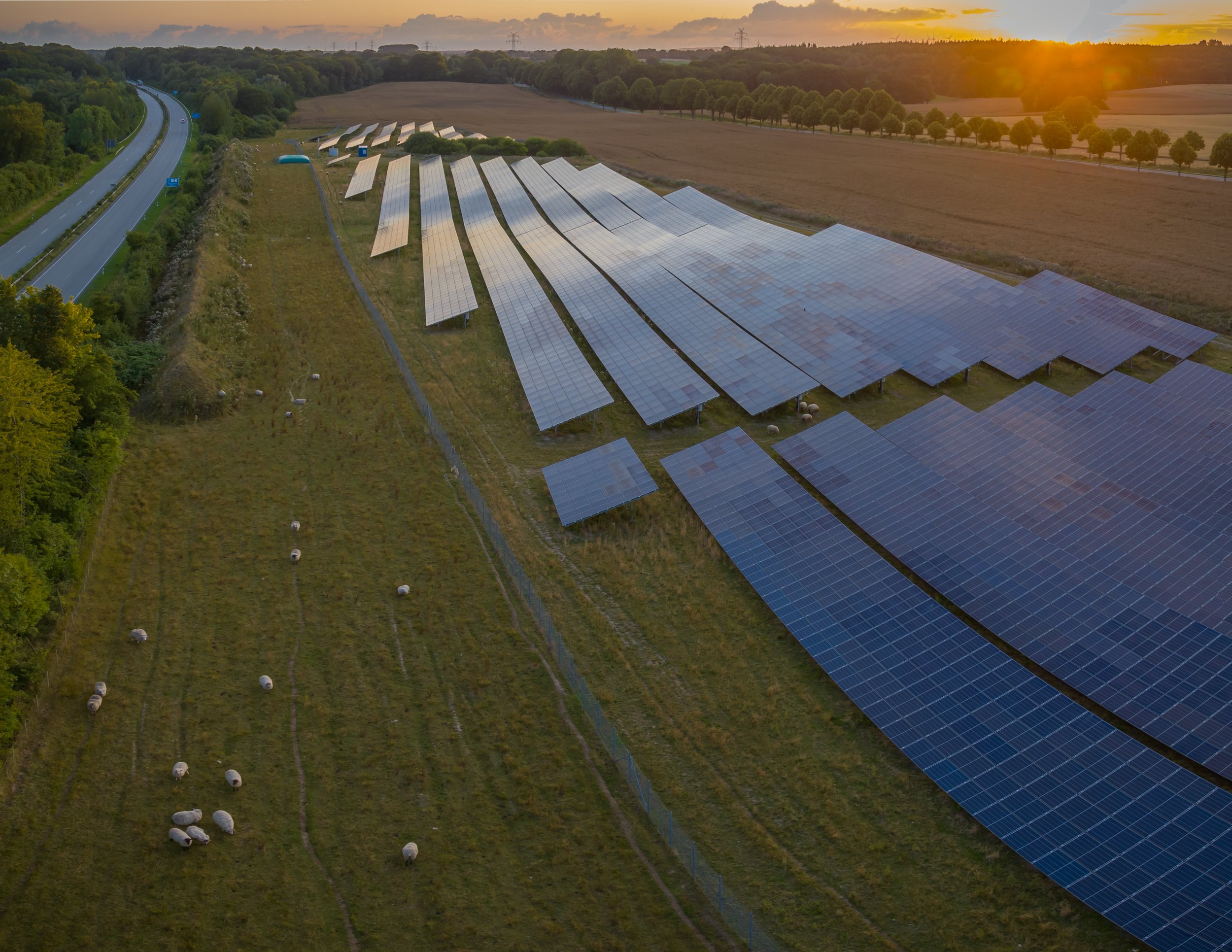
The Solar Park
We are at the early stage of developing our proposals. We still have to identify where equipment would be located and the measures that we can introduce that will reduce any potential negative effects on the surrounding area, communities and the environment.
We are carrying out detailed assessments to identify areas that could be set aside to create new or enhance existing habitats for biodiversity net gain. This would be alongside creating buffer zones to maintain a respectful distance between infrastructure and existing homes, landscape, ecological features, and Public Rights of Way.
The principal components of the Project would include:
Ground mounted solar photovoltaic (PV) panels: positioned directly on the ground to efficiently convert sunlight into electricity. While it is too early to confirm the specific solar panels that would be installed for East Pye Solar, we anticipate that the panels will be a mixture of tracker panels and fixed, with a maximum height of the panels (including mounting structures or supports) to be 4.5 metres.
PV module mounting structures: these robust structures securely hold the solar panels in place.
Supporting infrastructure:
Inverters: converting the direct current (DC) electricity generated by the panels into alternating current (AC). AC electricity is what powers homes and businesses.
Transformers: to increase the voltage of the electricity so it can be exported to the National Grid.
Switchgear: to manage the flow of electricity and direct it to where needed.
Energy Storage System: on-site storage facilities – known as Battery Energy Storage System (BESS) – would provide an important balancing service for the National Grid whereby electricity generated by the solar PV panels could be stored on site at times when demand for electricity is low, then exported on to the electricity transmission system when demand peaks. It could also be used to import and store electricity from the National Grid until it is needed.
On-site cables: to connect the solar panels and the battery energy storage system to the inverters which in turn connect to the transformers. Higher voltage cables will be required between transformers and switchgear and from switchgear to the off-site electrical infrastructure. These are generally sited underground.
On-site substation: to export electricity from the Project to the National Grid, ensuring it is accessible for public use.
Security fencing: a robust fence to enclose the operational areas of the site along with pole-mounted internal facing closed circuit television (CCTV) deployed around the perimeter of the operational site.
Site accesses: to be used during construction and for routine maintenance, there will be designed entry points to allow safe access to different areas within the Project.
New planting: trees and vegetation would be planted around the site perimeter to enhance biodiversity and contribute to the overall landscape improvement.
Construction compounds: during construction one or more temporary construction compounds will be required, as well as temporary roadways, to enable access to the land within the site boundary.


